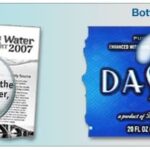Understanding how different substances conduct heat is crucial in various fields, from engineering to everyday cooking. This simple experiment demonstrates how to compare the thermal conductivity of common household liquids using readily available materials. By observing how heat transfers through different liquids, we can gain valuable insights into this fundamental scientific principle.
Materials and Methods for Testing Thermal Conductivity
This experiment requires basic kitchen supplies:
- Three identical clear glass containers
- Three thermometers
- A sheet of Styrofoam
- A heat source (e.g., a hot plate)
- Water
- Vegetable oil
- Vinegar
- Ruler or measuring tape
- Timer
Procedure:
-
Prepare the Containers: Fill each container about ¾ full with one of the liquids: water, vegetable oil, or vinegar.
-
Create the Styrofoam Lid: Cut a piece of Styrofoam to fit snugly over the top of the containers, effectively creating a lid.
-
Insert Thermometers: Carefully pierce three holes in the Styrofoam lid. Insert a thermometer through each hole, ensuring they reach ¼, ½, and ¾ of the depth of the liquid in each container.
-
Heat the Liquids: Place the containers on the heat source set to low (approximately 50°C) to prevent boiling. Allow the heat source to reach a steady temperature. You can monitor this with a separate thermometer or an infrared thermometer.
-
Monitor Temperature: Once the heat source is stable, place the containers on it. Record the temperature of each thermometer in each container every minute for 10 minutes.
-
Analyze Results: Plot the temperature readings against time for each liquid and each thermometer depth. Compare the temperature differences between the thermometers at different depths in each liquid. The liquid with the largest temperature difference between the top and bottom thermometers exhibits the lowest thermal conductivity.
Understanding the Science Behind Thermal Conductivity
Thermal conductivity measures a substance’s ability to transfer heat. High thermal conductivity means heat travels quickly through the material, while low conductivity indicates slower heat transfer.
Several factors influence thermal conductivity:
- Molecular Structure: Dense materials with strong intermolecular bonds tend to have higher conductivity. For example, metals are excellent conductors due to their closely packed atoms and free electrons that readily transfer energy.
- State of Matter: Solids generally have higher thermal conductivity than liquids, and liquids have higher conductivity than gases. This is because molecules are closer together in solids, facilitating more efficient energy transfer.
- Temperature: Thermal conductivity can vary with temperature.
Expected Results and Conclusion
Based on the principles of thermal conductivity, we can hypothesize:
- Water: Water is expected to have relatively high thermal conductivity due to its hydrogen bonding, which allows for efficient heat transfer between molecules.
- Vinegar: Vinegar, being primarily water, should exhibit thermal conductivity similar to water.
- Vegetable Oil: Vegetable oil, composed of larger organic molecules with weaker intermolecular forces, is expected to have lower thermal conductivity compared to water and vinegar.
This experiment provides a practical demonstration of how different substances conduct heat. By comparing the temperature changes in each liquid, we can observe the differences in their thermal conductivity. While this experiment offers a qualitative comparison, more sophisticated methods are required to determine precise thermal conductivity values. Further research into the specific heat capacity and molecular structure of each liquid can enhance understanding of the observed results.
